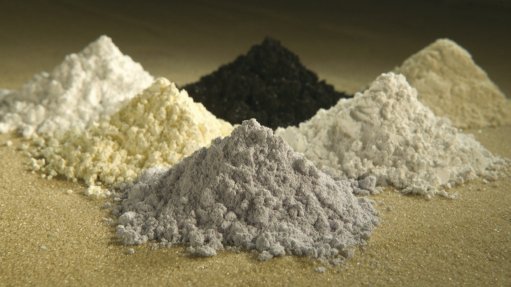
CHINA SOUTH RARE EARTH GROUP The group is a consolidation of 24 entities with a combined production capacity of 43 600 t/y and smelting capacity of 59 200 t/y
An expert panel, in China, has ratified the formation of the China South Rare Earth Group. The group was jointly established by Ganzhou Rare Earth Group, Jiangxi Copper Group, Jiangxi Rare Earth and Rare Metals Tungsten Group.
The group is a consolidation of 24 entities with a combined production capacity of 43 600 t/y and smelting capacity of 59 200 t/y. China South Rare Earth Group is fully vertically integrated and encompasses exploration, mining, processing, trading and research.
This is according to mining consultancy Core Consultants’ latest rare earths report, which was released earlier this moth.
The report further highlights that India is also looking to develop its rare earths industry to support its growing defence sector.
“In May, we reported that the Indian government was seeking to amend its Atomic Mineral Concession Rules to enable private investors to develop the country’s monazite resources,” notes Core Consultants MD Lara Smith.
She says that the proposed amendments have, however, invited criticism from the Beach Minerals Producers Association (BMPA), as it believes that the proposed changes threaten the existing private producers by forcing those deposits with a monazite threshold higher than 0.75% to be ceded to the State. Smith explains that the BMPA has argued that this threshold is arbitrary and low and should be raised to a minimum of 5%.
She points out that the need for alternative sources of rare earths has been well documented. However, Smith states that the ability to produce rare earths economically outside China has been challenging.
The deposits are generally “rich” in light rare-earth materials, including cerium and lanthanum. Therefore, research has been ongoing into other avenues, including reformulations of magnets and other materials.
Smith highlights that the US Department of Energy has been developing an aluminium-cerium alloy that could potentially have application in internal combustion engines. “If successful, the commercialisation of the alloy may encourage US producers to increase production of rare earths, as cerium generally comprises 50% of a deposit’s resource, which in most instances renders it uneconomic.”
Moreover, she comments that another recent research breakthrough is integrated speciality steel and magnet products producer Daido Steel and Japanese public multinational conglomerate corporation Honda Motor’s development of a practical application for a hot deformed neodymium magnet. It ontains no heavy rare earths and yet possesses high heat resistance properties and the high magnetic performance required for use in the driving motor of a hybrid vehicle.
Honda is planning to incorporate these magnets in their hybrid vehicles from this month onwards. Initially the magnet will be applied to the sport hybrid i-DCD model, which is a hybrid system Honda will use for the new FREED model.
Smith explains that the thinking behind both the neodymium magnet and the aluminium- cerium alloy is that, as companies increase the use of lighter rare earths at the expense of heavier rare earths, deposits outside China will become better aligned to market demand.
She further points out that China has pledged that 20% of its power will be derived from nonfossil fuel sources by 2030. However, China is experiencing challenges in terms of integrating the wind capacity to its existing electricity grid, as a result of which around 26% of its energy produced from wind power is being wasted.
“As such, China will not approve any new projects in those areas where average wind power generation has fallen below par. “The share of wasted energy reaches 50% in Jilin, Gansu and Xinjiang provinces,” Smith notes.